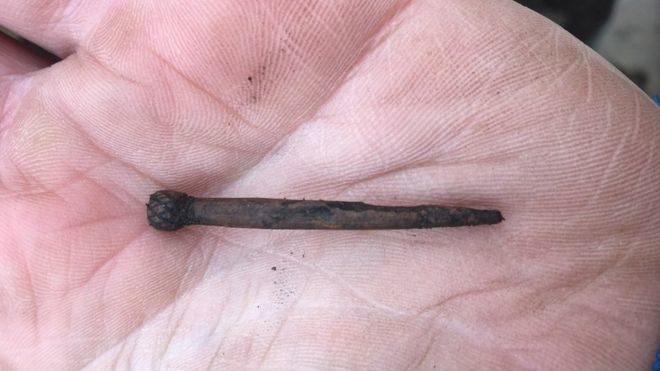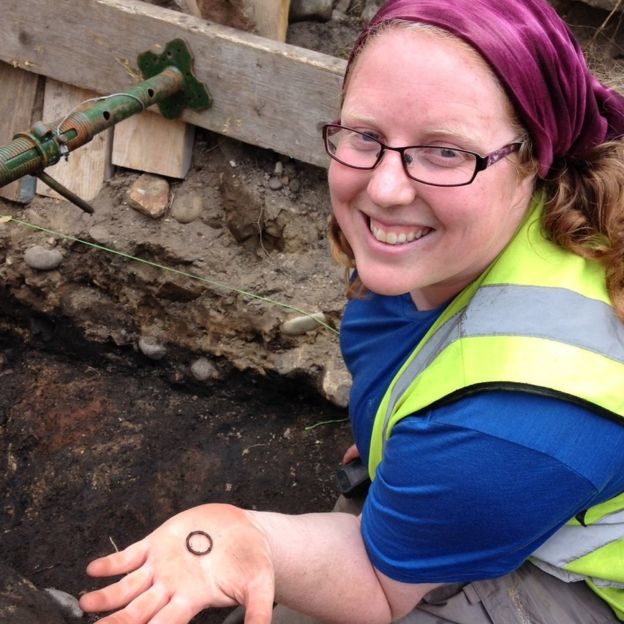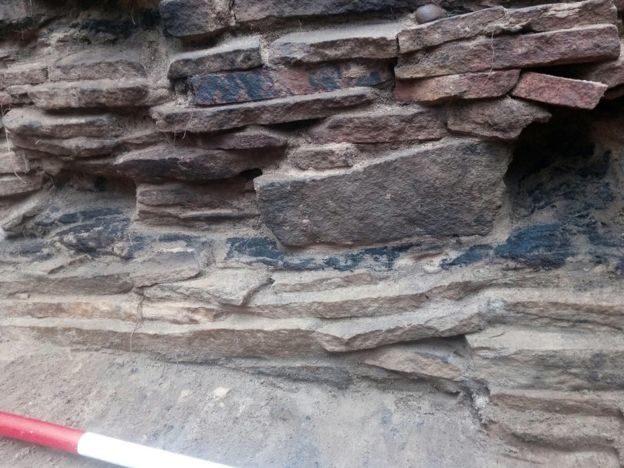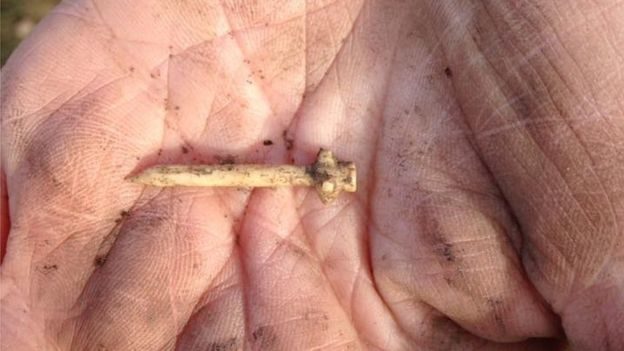
The building near Burghhead is believed to have been destroyed by fire in the 10th century as the Vikings invaded.
It spelled the end of Pictish life in the area but the blaze preserved material that would normally have rotted away hundreds of years ago.
As well as a complex layer of oak planks in a wall, archaeologists have uncovered jewellery and animal bones.
Many of their discoveries have been made during their excavation of what was essentially the Picts' rubbish bin.
But they are helping to shed new light on the day-to-day life of the fort's inhabitants, including their diet.
The team of archaeologists from the University of Aberdeen began their excavation of the site in 2015, when they uncovered a Pictish longhouse and Anglo Saxon coins from the time of Alfred the Great.
Led by Dr Gordon Noble, the university's head of archaeology, they returned to the site in April.
Little archaeological work has been carried out at the site previously as experts believed anything of value had been lost.
Dr Noble said: "But when we started digging, we discovered that while the destruction of the fort in the 10th Century may not have been good news for the Picts, the fact that so much of it was set alight is a real bonus for archaeologists.
"We have discovered that the complex layer of oak planks set in the wall was burned in situ and that the resulting charring has actually preserved it in amazing detail when ordinarily it would have rotten away to nothing by now."
The level of preservation has allowed the archaeologists to take samples for carbon dating which should provide new insights into the period when the fort was built, its construction and final destruction.
"The Picts were a huge influence on northern Scotland but because they left no written records, archaeology is essential in providing answers in regard to their lives, influence and culture," Dr Noble added.
"While it has long been known that Burghead was a very significant place, it was also assumed that its archaeological value had been largely lost due to the destruction caused by the building of the modern town.
"Our work so far has shown that this is certainly not the case. Instead we are starting to build a picture of Pictish resources being out into this site on a scale we have never found evidence for before."
Intricate hair and dress pins - including one with a detailed bramble design - were also among items found in "midden layers".
"We are digging in what is essentially the area that the Picts threw their rubbish but this collection of the waste products of their day-to-day lives is a treasure trove to archaeologists," said Dr Noble.
"What's exciting is the level of preservation here. We've found animal bone which rarely survives in mainland Scotland because of the acidic soil. We are already getting really nice information about what people ate within the fort and we hope to extract a level of information we've not had for Pictish sites before."
But the archaeologists are facing a battle against nature to excavate the site, before it falls victim to the sea.
Dr Noble said: "Coastal erosion is getting to be a real issue at the site and over the last century metres of coastline have disappeared.
"The timber wall we found is only one to one and a half metres away from the erosion face.
"We hope to return next year to rescue as much as we can before it falls into the sea."






Comment: It's speculation on behalf of the archaeologists to say that the invasion of the Vikings led to the burning of the Pictish fort because, as with many other sites around the world, there is good reason to think that other factors were actually responsible: